Once upon a PAX U, way back in December 2019 before COVID rendered the world housebound, I played a Tabletop RPG with actual people, live and in-person. The game was Fate Of The Norns: Ragnarok by Pendelhaven Games - a Viking-themed role-playing game steeped in Norse Mythology. Dice were replaced with runes, and a quest to go and crush goblins were replaced with a harrowing adventure surviving draugr climbing the sides of our ship.
Team Sprites and Dice had been invited to play through a short campaign, led by the creator himself, Andrew Valkauskas. My husband and I enjoyed our adventure so much, he went back to the booth the next day and bought the Core Rulebook along with a set of runes to really get into the aesthetic of the game. On our drive home from Philly, we gushed about getting folks together to play, and the review I planned to write.
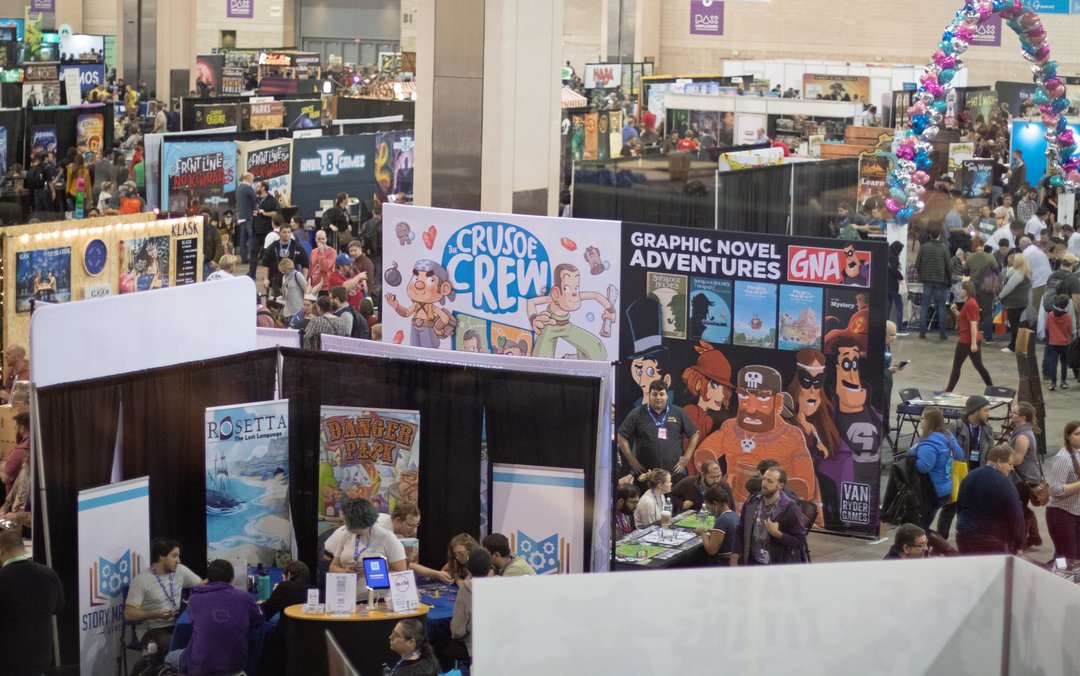
Remember conventions? With people?
As is expected with 90% of in-person game nights, nothing came to fruition due to the ever-present hurdle of “adulthood”. Several times, we almost wrangled up a group of friends to play, but life inevitably got in the way. Not long after, this little virus came along, further inhibiting our plans for a game night.
Fast forward to August 2020 -- the hubby decides he’s in the mood to rearrange all of our bookshelves. As he’s parsing out one book to the next in their respective categories, I spot the Fate Of The Norns rulebook in the pile on his desk, still waiting to be played. Pouring through the pages, I’m immediately reminded why I want to revisit the world created within it: it’s just too good to be ignored. In my mind, I’m immediately transported to that basement conference room at the Philadelphia Convention Center with my friends, strategizing and slaying enemies while aboard a Viking ship, navigating the chronicles of a lush mythical setting. It’s a world that begs to be revisited.
 Fate of the Norns
Fate of the Norns
Author: Andrew Valkauskas
Publisher: Pendelhaven
Format: TTRPG
Price: $70 for core rulebook
Review Copy Purchased By Reviewer
A Different World, And One Without Dice
Remember a while back when I kvetched about getting bored with traditional fantasy? It’s for that very reason that Fate Of The Norns: Ragnarok was so refreshing. This isn't just a Dungeons and Dragons spin off with a different style setting. Instead, Fate of the Norns feels different from the ground up.
As the title declares, the setting is Ragnarok: the end of time in Norse mythology. The player characters (known as “dwellers”) choose one of several archetypes to navigate the events of this turbulent time. For example, there are Galdr (who can wield magic using runes), Maidens of Ratatosk (known as the “girls of mischief”, who live for adventure and chaos), Seithkona (who can manipulate the spiritual energy of the world around them), Skald (poets and bards), and Ulfhednar (who live for the hunt). There are also the more “traditional” roles, such as rogues, blacksmiths, and druids. As is standard, players will create their dwellers and gain levels as they accrue experience. EXP can be invested in two areas: Destiny (which defines the impact the hero has on the world around them) and Essence (which represents life-force, as well as experience and wisdom).
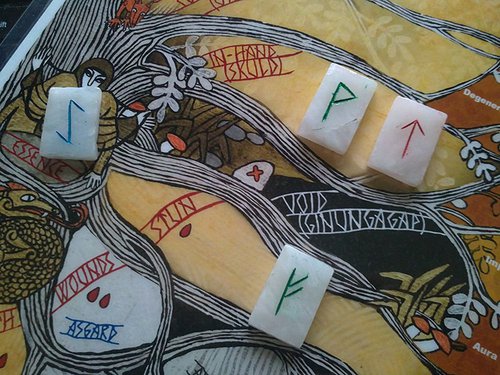
What made the game so compelling is how much detail is put into weaving the Norse mythology into each element of gameplay. The game utilizes rune stones to decide the character’s fate (rather than traditional dice) in addition to miniatures and a hex mat. Overall, this Runic Game System (RGS) includes 24 Elder Futhark runes, which represent the player’s abilities and actions. The colors of the runes define the character’s attributes: Red runes are physical, blue represents mental strength, and green represents spiritual qualities.
Furthermore, the GM is known as The Norn, which is a “timeless spirit who inhabits and permeates all creation”. This small tweak makes the game feel richer, as The Norn is technically a part of the same world as the dwellers, but serving as an overseer. This interaction feels more grounded in the lore, as even the GM, in a sense, is roleplaying as an arbiter of fate, rather than just acting as a “human rulebook”.
When the player takes an action in the game, it’s called a “Wyrd”, which means causing effects in the world around the character, or “revealing destiny”. This is done by drawing the rune stones, which are kept in an opaque container, such as a bag or a box. When you Wyrd, you draw a random number of runes out of your bag equal to your Destiny rating, which will determine the outcome. In one sense, it’s like rolling dice, as your fate is in the hands of something unpredictable. However, there’s something more connective about the action of pulling runes from the bag, giving an ethereal sense to the gameplay. It adds a level of theme to the roleplaying that's hard to match.
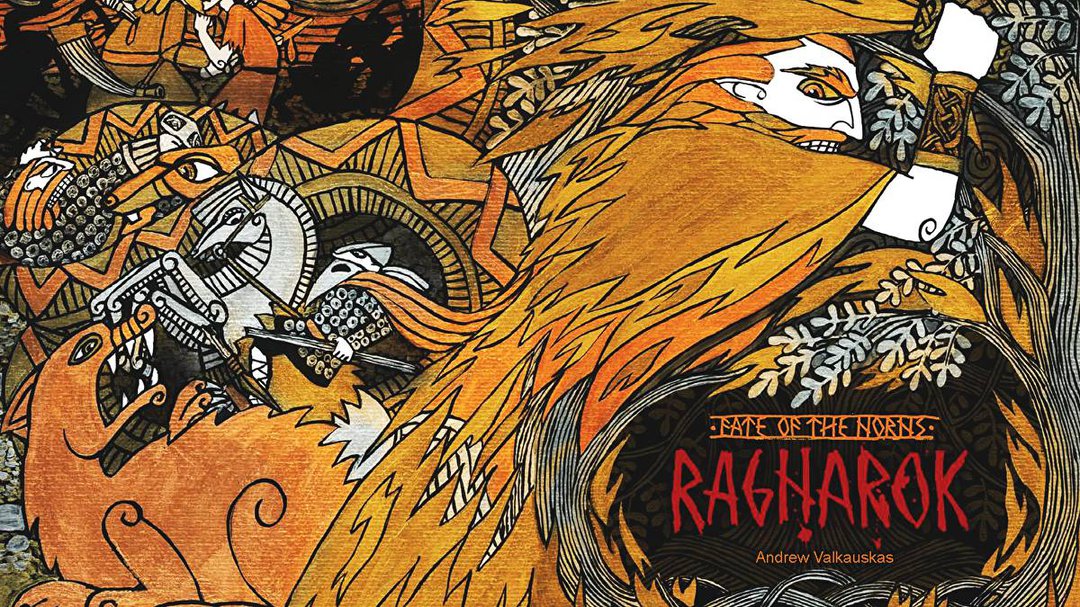
The art for this game evokes a different mood than any other tabletop game we've played.
Rounding out the experience, the artwork of Fate Of The Norns is GORGEOUS, with an aesthetic touch that truly reflects its source material. That one extra step, with hand drawn illustrations infused in golds, reds, and browns, truly sets a vivid stage for the world you are about to enter. There really isn't anything out there quite like this game.
In Life Or In Death, There Is Glory To Be Found
Speaking of mood, Fate Of The Norns offers further immersion even when things go wrong. When your character dies, there’s a chance they could be sought out by the Valkyries, who will escort them to Valhalla. During our game, it was explained that fellow players are encouraged to give your character a proper funeral to facilitate this ascendance. When this happens, the player will draw one rune if they are able to share a tale of their deeds and exploits; meanwhile, the Norn draws several runes, based on the life the character led, and the burial they received. If there is an exact rune match between the player and the GM, the dweller rises to Valhalla, which unlocks new features that can strengthen future characters. Yes, death can occur, but they die to help create a greater story.
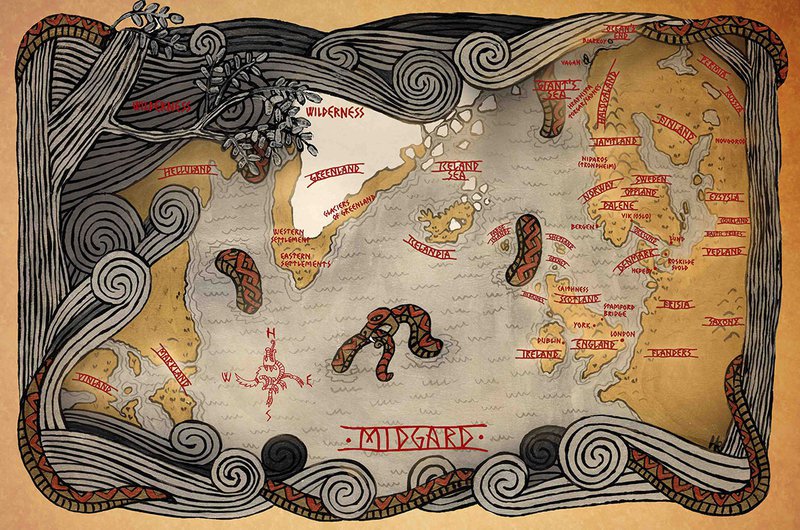
The more characters that the player ascends, the more features are unlocked. It’s a beautiful concept: even your deceased characters serve a purpose, not to mention it sets the table for long campaigns and endless possibilities. Fate Of The Norns encourages a focus on legacy, rather than just a singular character. There’s something unique about the lineage aspect that makes for a richer gaming experience. This is a game that to me, feels more in tune with trying to tell an epic story - an edda if you will - than individual great moments. Even in just one game session, I could get that feeling of depth.
A Blast To Play And To Experience
Let’s bring the scene back at PAX U: As a novice TTRPG player, I sat down at the table with my fellow Sprites and Dice editors, writers, and friends with an awkward smile, trying to hide my trepidation. I’ve always been the player who lives for the roleplay, but flounders with rules. You know that person: “now, which dice do I roll?” “Oh right, I completely forgot about that stat boost.” “Huh? Why can’t I take that action?” In fact, I’m pretty sure I apologized to Eric in advance about all the questions I was about to ask, since he was the unfortunate soul who sat next to me (my own husband sat at the other side of the table. He knew what was up).
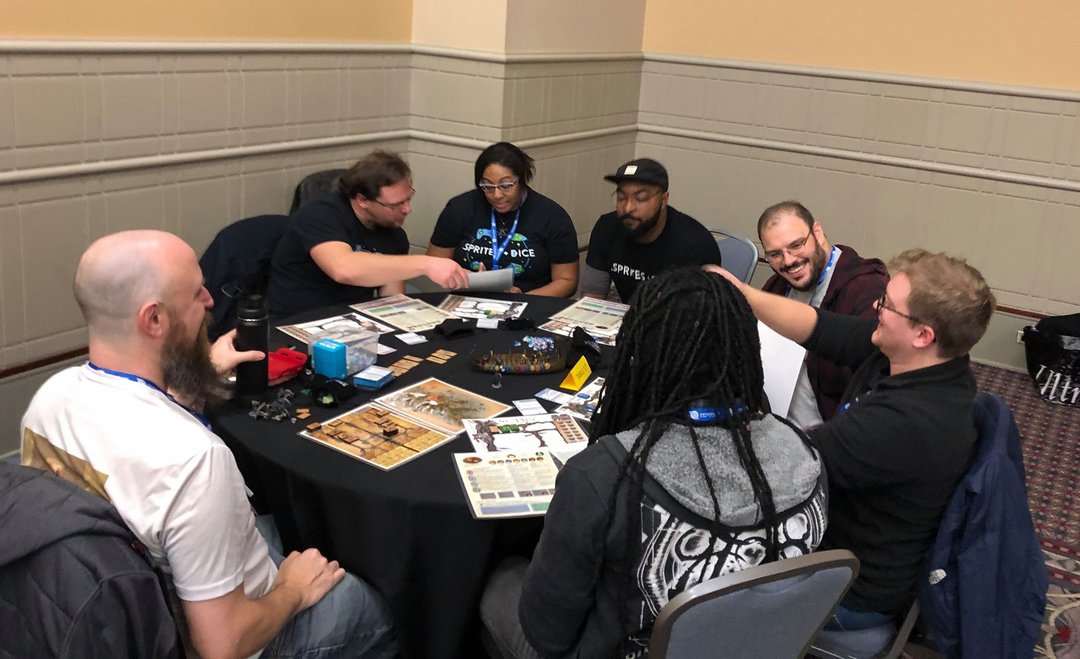
Even with six players and a brand new system, the game had a real sense of adventure and moodiness to it.
Once I got into the rhythm of the Runic Game System, I found Fate Of The Norns much easier to pick up on than other TTRPGs. It’s incredibly organic and more situated in story and having access to abilities rather than being saturated in numbers. It allowed me to approach the rule system with a smooth sensibility of gameplay, rather than trying to remember my feats or “mathing”. Fate Of The Norns’ design mantra is “easy to learn, long to perfect,” which was immediately clear just from the brief session we had. I picked up the gameplay quicker than I thought I would, and couldn’t wait to learn more -- to experiment, dig into the possibilities of increasing my Destiny/Essence levels, and apply what I learned to the other job classes.
As our adventuring party battled enemies from atop our Viking ship, learning the varieties of havoc I could cause with my Seithkona was an absolute blast, which I mean literally: I might have had too much fun with fireballs. My friend Jack, who had played a missionary priest, took time to lecture me as we kept making sure to send Draugr to watery graves for the second time. Our team fought furiously to defend ourselves, each using our individual skills to look badass and act in our own class.
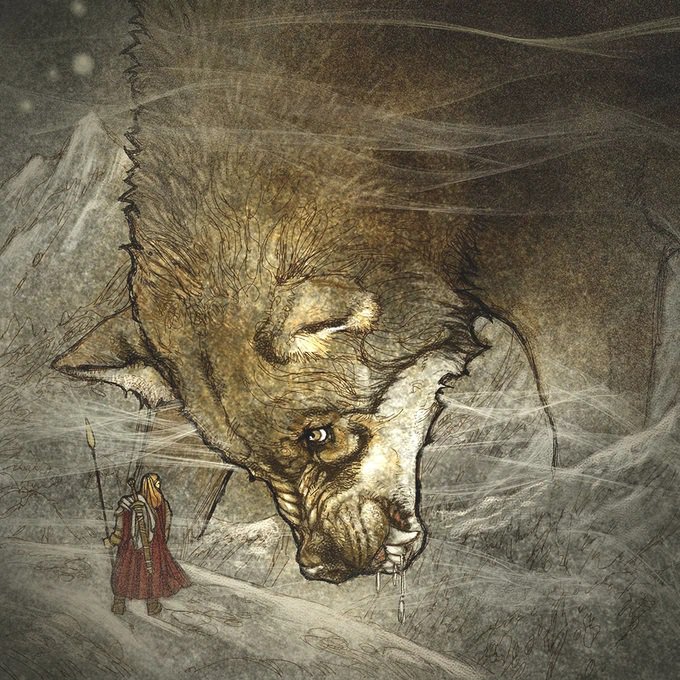
If you want attitude, Fate of the Norns: Ragnarok has it in spades.
This is where the runes really become the star of the show again. Fate Of The Norns utilizes a player mat, with 9 areas to keep piles of runes, rather than a character sheet. As gameplay continues, these runes are moved around the play mat. Again, even in this short campaign, I felt like I was watching my character grow, react, and suffer effects, consequences, and boosts in real time. This approach was much cleaner and easier to follow; in fact, the playmats have space to showcase the various status effects you can receive during combat. Even though our session was only a couple of hours long, I got to play more than usual because I spent less time scrambling around to figure out where to jot down hit points.
Now To Get The Campaign Going
Leaving the table that evening, I felt a twinge of panic when I was assigned the Fate Of The Norns review. Could I do it justice? I’m the TTRPG neophyte of Sprites and Dice - I had been drawn in by the style and the aesthetic, but would this be an experience that stuck with me?
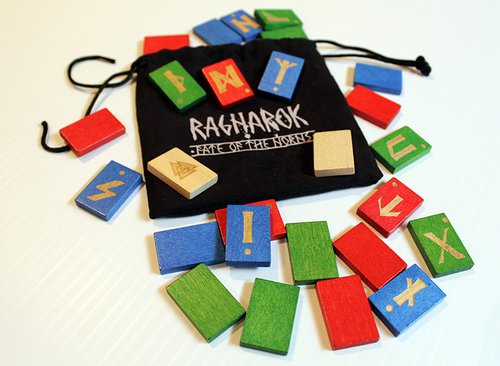
That night, as I reminisced over the day’s events, pouring through the countless notes about booths visited and games demoed, the experience that resonated clearest was Fate Of The Norns. At that table, surrounded by friends and the enthusiastic “Norn” who welcomed us into the deep lore of Ragnarok, I quickly forgot about how inexperienced I was at this type of tabletop adventure. The intimidation that I wouldn’t grasp the concepts melted away as our boat reached an eerie tower and our party was besieged by enemies coming up from the murky water below us. I focused on the ridiculous banter between my buddies about which Gods our characters worshiped, rather than falling down the hole of “Gamer Imposter Syndrome” if I didn’t grasp every corner of a character sheet. Fate Of The Norns: Ragnarok, with its streamlined gaming system and aesthetic-driven storytelling devices, offered me an olive branch to join in the festivities. The game is simple to grasp, yet deep and rich enough to get lost in for a longtime campaign. For those reasons, it was one of my favorite parts of PAX U.
So what now? It's been months since it feels like I've seen people, much less played this game. Even still, the memories I had of playing were still so strong they came rushing back just by finding the rulebook again. It made me yearn for tossing runes and going on epic adventures. Well, by the Hammer of the Gods, I’ll drive my ships to new land...to fight the horde, and sing and cry, VALHALLA, I AM COMING! In other words, the hubby and I will wield the powers of Discord or Zoom to get a game going!
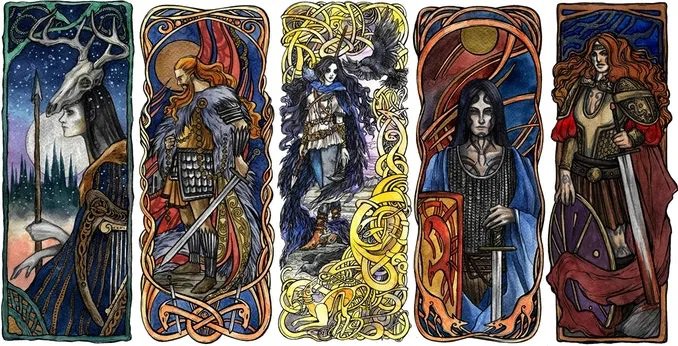
There is more than just Vikings available now in Pendelhaven's collection.
By the way, the Fate Of The Norns: Ragnarok Core Rulebook is just the tip of the iceberg. There are several additional campaigns in the series, as well as novels set in the universe. There really is nothing quite like these books in how they try to blend lore with gameplay. Recently, they've even gone a step further: their latest, The Children of Eriu, changes the focus from Viking to Celtic lore, shifting their art and aesthetic to match. Seriously, check this series out, if you haven’t already. In these times when we can’t leave home, the world of Fate Of The Norns: Ragnarok is a vivid place to escape to. I just wish I had found our rulebook sooner.